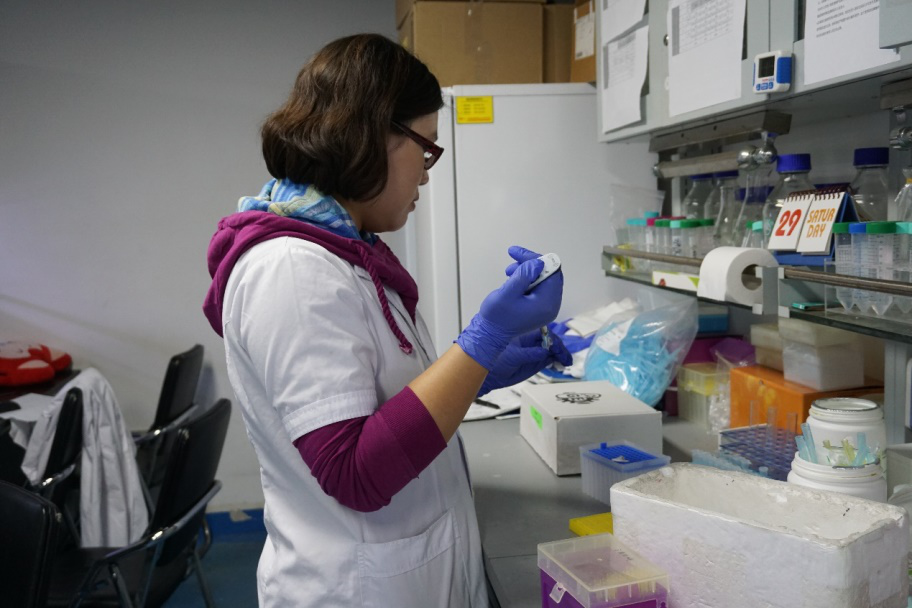<!DOCTYPE >
Silver
How Did We Start?
After we decide to do with the CRISPR-Cas system, we start to think about how can we combine our lab work with the world.
Firstly, as we all know China is a developing country, a large number of pollutions are inevitable, especially some
heavy metals in water from metal factories. Secondly, cancer is always a big problem around the world, comparing
to paying lots of money on the low chance of curing it, the prediction seems to be more significant. So with our
theory of gene editing and detection, two embryonic thoughts of our projects related to the society came out, which
are “heavy metal detection in the water” and “high throughput screening of cfDNA of cancer.
Communications
During the time we are working on the projects, Junjing Chen went to the 2018 Eurasian meetup to communicate with other
teams. Chenbo Sun went to Nankai University for a communication which was attended by nine teams. We took an active
part in the first iGEM Eurasian meetup co-organized by TU Delft and BGI college in Shenzhen, which several other
teams participated including EPFL, Tongji, HKU and so on. The meetup schedule is similar to that of Giant Jamboree,
which offered us an opportunity to practice presenting our project. Through the Eurasian meetuo and communication
in Nankai University, we received useful suggestions on how to improve our projects, and we firmly believe that we
will do better in the future. Furthermore, we also established strong relationships and built collaboration with
buddy teams. We received other teams’ advice and figured it out that we can turn our work into products or make the
results useful to every person, not only to the entire society.

Figure 1. Junjing Chen illustrates our projects to other teams.

Figure 2. Communicate with others about different projects .

Figure 3. IGEM Eurasian Meetup.

Figure 4. IGEM team communications in Nankai University.
Future Prospects
With the results and information we got, we began to model our projects. Since nobody knows how to develop a model, we
contacted prof. Mario A. Marchisio from SBSD of Tianjin University, who is an expert in synthetic biology. We communicated
by emails and also get suggestions when talking to him face to face. Once our projects work, we may develop them
into products including heavy metal detection and cancer detection in the future.
Integrated Human Practice
High throughput screening of cfDNA of cancer
As we all know, when designing a product, it is essential to understand who will use it. With this question, we contacted
Dr. Zhong in the hospital, and she helped us to get useful suggestions from professional doctors, who may use the
high-throughput screen of cancer detection in their work. They told us every product has its suitable candidates,
when it comes to our cancer detection thoughts, people whose family has cancer history and those who always work
in an environment full of a large amount of radiation are the primary users. It undoubtedly helped us solve the problem
of what kind of people should we focus on. They also pointed out that in real life, this technology can well predict
cancer easily, but if the users want to make sure of it, imaging data is necessary. We didn't think of this a safety
problem before, so once we make it a product, we will emphasize the work of predict but bot a diagnosis. Furthermore,
the hospitals may be the first user of this product because of the straightforward approach of cancer detection,
so we intend to help each other for long.
As we are undergrads who don’t have many experiences in the lab, Dr. Zhong also showed up in our lab to give advice.

Figure 5. Tianjin Medical University General Hospital.

Figure 6. Dr. Zhong showed up in our lab.

Figure 7. Ask advice about our project.
Heavy Metal Detection in Water
As citizens in China, we have seen some shocking scenes of water pollution just because factories pull wastewater directly
into the drinkable water. Though the government public laws and paid more attention to this situation several years
ago, citizens still have some concerns about the water they drink. To know the water quality of our district, we
went to the environmental protection bureau and water factories for information about heavy metal pollution of water
resource, which would help a lot in making our project heavy metal detection in water into reality. They told us
the number of heavy metals in water is low enough to drink, but most of the detection methods are about chemistry,
detecting heavy metal in water with biology has excellent prospects, and it’s a good choice for us to keep on with
the project. To know more about water quality around the world and relevant safety problems, we sent emails to IUCN,
EEA and so on. Through our efforts, we realized most developed countries don’t have such concerns, and developing
countries have the main populations who concern about this issue which helped us ensure our projects direction. What’s
more, the product also has the potential to be used by relevant organizations and professionals.

Figure 8. Get suggestions from the environmental protection bureau.







